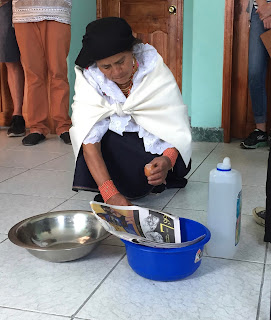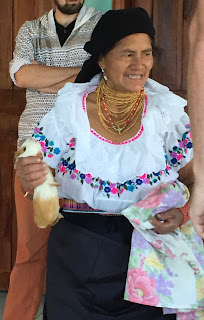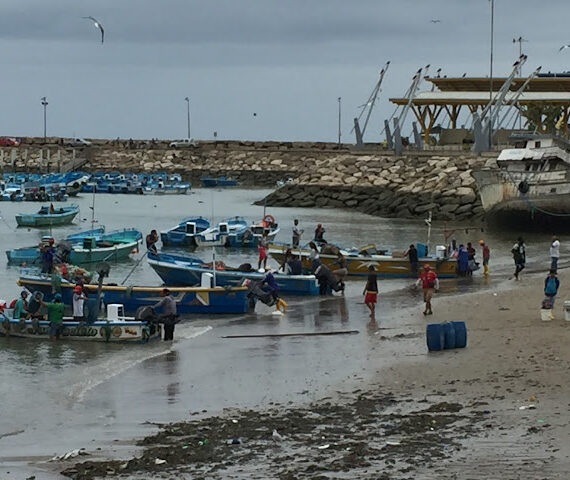Earlier this week, I posted on Facebook a picture of me eating a cuy (pronounced coo-ey), better known as a guinea pig. Yes, those fuzzy animals that we in the United States use as a classroom pet, are actually an historic and culturally important food source for the people of the Andes region. They grow them on farms to eat at restaurants and at family celebrations. I was a bit dubious to eat the little guy that arrived on my plate with head and paws attached, but the meat was tender and juicy and it actually tasted great! (Please note, my response might have been biased because it was the first piece of meat that I’ve had in over a month that wasn’t cooked to hard rubber stage!)
Anyway, after eating the cuy, I figured I had passed some Ecuadorian integration test and I could be done with that. Not so fast! The following day, my adventure with cuy continued.
Please note, the rest of this story is graphic, and NOT for the lovers of furry animals or animal rights.
Read on at your own discretion!
This is a traditional medicine woman. She, with other practictioners, treat all kinds of diseases and conditions at this clinic. But in order to diagnose what is wrong with you, she has to “clean” the energy from you. Here she is rubbing a random volunteer’s body with an egg. The energy (positive or negative) from this person’s body is being transferred to the egg.
Then she cracked the egg and diagnosed the volunteer’s energy by analyzing how the egg peels, and by the look, texture and color of the egg white and yolk. After her diagnosis, which included both physical and emotional ailments, the volunteer confirmed that the doctor was spot on.
She then explained that if a person had serious symptoms, a more thorough investigation of the body’s energy was needed. For this, she used a live guinea pig, or a cuy.
| She rubbed the cuy very vigorously over the head and body of this volunteer. |
| After about 5 minutes, when she was finished, the cuy was dead. |
| She then took a knife and cut open the tail and started to skin the animal. |
| When she had it skinned, she analyzed its outer physical body. |
| Finally, she took apart each organ and commented on the state of his intestines, liver, kidneys, gallbladder, heart and lungs. |







Sue
WOW! What an experience!
Lyssa
Wow! Thank you, Becky, for sharing the details of this experience and your thoughtful and honest response to it, and the questions it brought up for you to ponder. I, too, find myself pondering and questioning my own reactions to it, as I was simultaneously fascinated, horrified and impressed! This is what I love so much about travel – learning how other cultures live and do things differently, and how their practices and values can rub up against our own, giving us pause. It's like the lens goes "click" and we suddenly see our known world from a new perspective. I just love arm chair traveling with you on this wild adventure! So excited you are where you are!